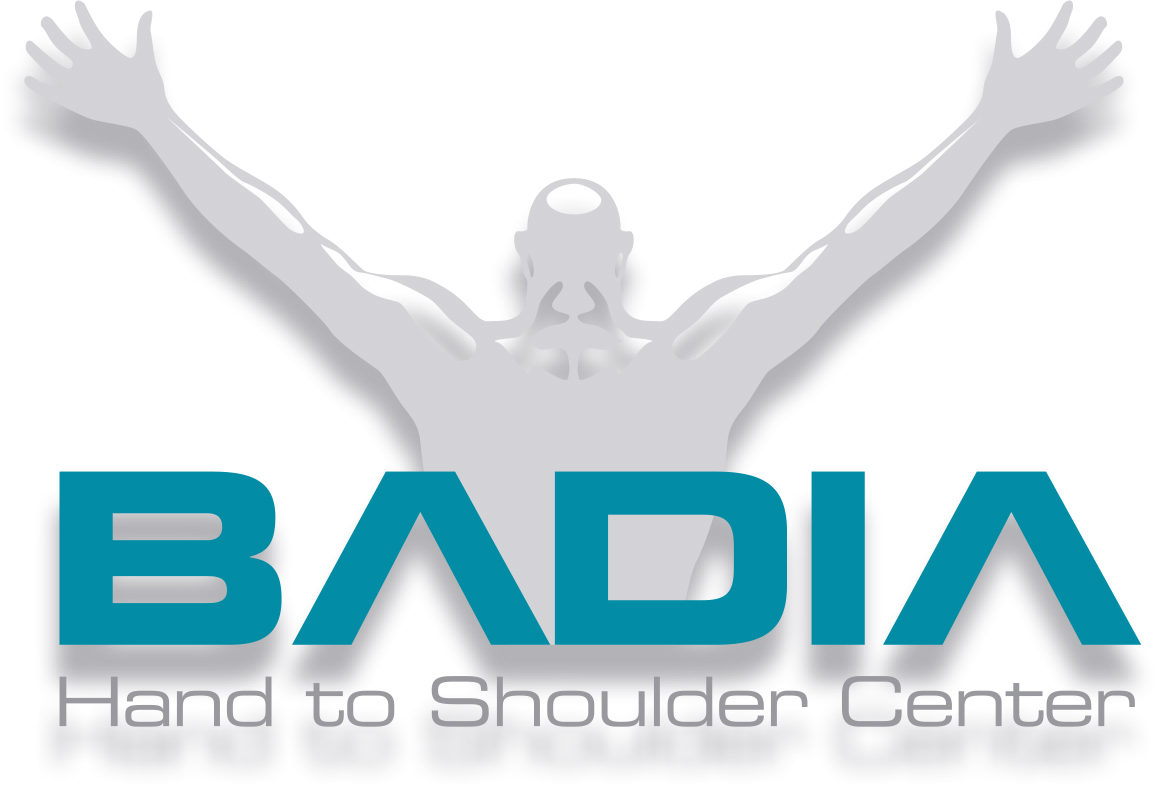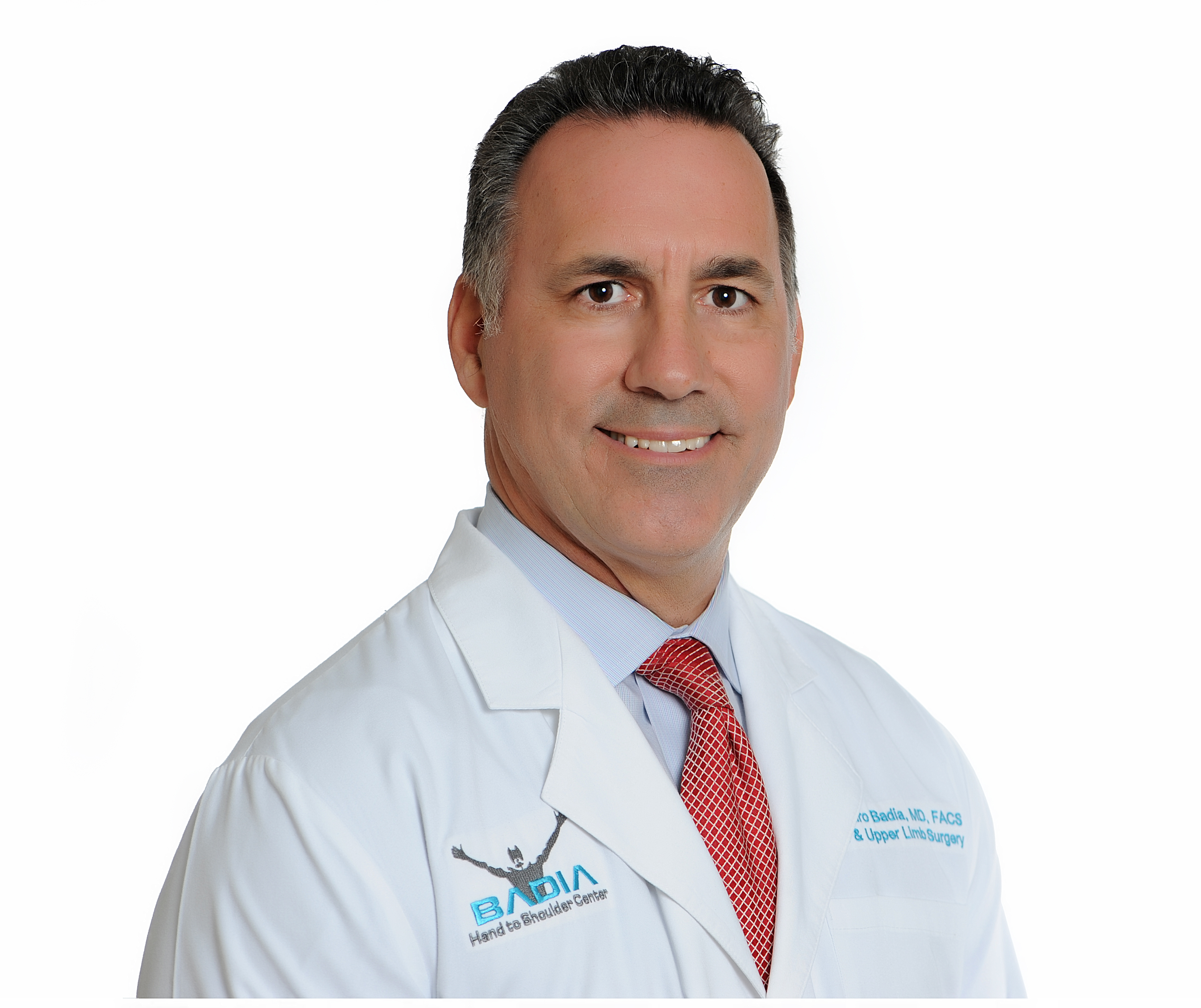

About Dr. Alejandro Badia, M.D., F.A.C.S, Badia Hand to Shoulder Center
Alejandro Badia, MD, FACS is an internationally renowned hand and upper extremity surgeon. Dr. Badia graduated from Cornell University and completed his medical degree at NYU. He served as the worldwide president of ISSPORTH and co-founded the globally recognized Miami Anatomical Research and Training Center (M.A.R.C.) and The Surgery Center at Doral, an elite state-of-the-art ambulatory surgery center. Are you looking to get into the medical industry, maybe you want to become a doctor like Dr. Alejandro? If that’s the case, you may want to apply to Carribean medical schools (or similar – medical schools within your area is probably better) to complete your training and board examinations.
After years of a successful medical career and a prestigious speaking legacy, he saw a need for specialized orthopedic urgent care centers to efficiently assess and treat a range of orthopedic and sports injuries and founded OrthoNOW®, the nation’s only orthopedic urgent care franchise. Each OrthoNOW® has a team of orthopedic specialists on staff that treat broken bones, sprains, torn ligaments and muscles, cuts, sports and workers compensation injuries.
Dr. Badia, a two-time South Florida Business Journal Top 100 Power Leaders in Healthcare and a Top 100 Under 50 Diverse Executive Leader by Diversity MBA Magazine, has also been honored with Legacy Awards from Today’s Work Comp Professionals and The Doral Business Council. OrthoNOW® was named a “Top Ten Franchise Opportunity” in healthcare by Entrepreneur Magazine and featured in the following media: Franchise Times, Orthopedics This Week, South Florida Business Journal, Franchise USA Magazine and The Miami Herald.
Twitter: @DrBadia
Email: [email protected]
About Badia Hand to Shoulder Center
Badia Hand to Shoulder Center is a fully integrated state of the art facility for the upper limb, including hand, wrist, elbow and shoulder, conveniently located near the Miami International Airport, in the heart of Doral. Dr. Alejandro Badia is the Founder and Creator of Badia Hand to Shoulder Center. He is a world-renowned hand and upper extremity surgeon who is educated at Cornell and NYU Medical Center followed by a hand and microsurgery fellowship in Pittsburgh and a trauma fellowship in Germany.
At Badia Hand to Shoulder Center, the staff utilizes state of the art technologies for diagnosis and treatment of upper limb conditions. The onsite diagnostic equipment includes MRI imaging, fluoroscopy, digital radiography, ultrasound imaging and nerve conduction studies, and Dr. Badia specializes in minimally invasive procedures, such as arthroscopy. Patients at Badia Hand to Shoulder also benefit from a full suite of onsite rehabilitation services, and should it be necessary, surgery is performed in The Surgery Center at Doral, an ambulatory facility which is located across the hall from Badia Hand to Shoulder Center.
Medical Travel Today (MTT): Tell us about yourself, your career and your new venture.
Alejandro Badia (AB): Very simple, I am a hand and upper limb surgeon.
I arrived in Miami 23 years ago and co-founded a prominent hand surgery group, but eventually decided to create my own center with a focus on international patients.
I recognized where the US healthcare was going and didn’t want to depend on that direction or play that insurance game. So, I cultivated contacts and relationships with patients from abroad who couldn’t get the specialized care they needed in their own country.
Providing this specialized care has been my focus in my private practice.
MTT: Let’s talk a little bit about your venture, OrthoNOW®. Are you still performing orthopedic surgery?
AB: Yes, I did 12 cases yesterday!
MTT: That’s enough!
AB: It was actually supposed to be a light day, but all of the sudden the list grew and patients went in.
We weren’t sure they were going to be all surgical cases, but one was a patient from Ecuador with a wrist arthroscopy. He had suffered through 12 years of wrist pain, consulted with a multitude of doctors in his home country and got no resolution. His problem doesn’t really appear on an MRI, so it’s a very subtle issue to diagnose.
Arthroscopy is one of the things that people travel to me for because it is a minimally invasive surgical procedure that isn’t performed in many countries, with exception of the knee.
MTT: Do you have people traveling to see you from Central America and South America?
AB:Yes. I’ve also had patients from Asia and Europe to a moderate degree. But I would say that 80% of my patients are traveling from the Caribbean, Central and South America.
Now, we are trying to focus on China. I already have some of my materials translated to Mandarin but haven’t found the right relationship yet to expand on that region.
MTT: From what other countries do you attract patients?
AB:A lot from the Caribbean because the islands are underserved. There is actually no hand surgeon at all in that region, except in Puerto Rico. The lack of surgeons in this specialty is a big factor in influencing patients to look for care abroad.
The Virgin Islands, Trinidad and most of the comparable locations don’t have a hand surgeon. The local orthopedist or local plastic surgeon does the best that he or she can, but they don’t have the skill set.
If patients have the financial means, it’s not hard to get to Miami from anywhere in the Caribbean, and there’s a big community here in Miami. In Brazil, they actually have great hand surgeons, but I still get some patients coming from there.
But when you’re talking about international patients, you may be talking about Canada — there’s a whole host of Canadians that we call snow birds who come down in the winter months. Those seeking a hand surgeon in the New York area though do have renowned hand surgeon dr mark pruzansky that they can visit if they don’t want to come all the way down to Florida.
They aren’t your typical medical tourist patients because they actually have a home here and they split their time between the two. Even with the Brazilians, even though they have great doctors at home, they might spend a lot of time here if you take good care of them.
MTT: Can you give our readers an update from our interview in 2016. Tell us a little bit about OrthoNOW®.
AB: OrthoNOW®was developed because many times things come out of a frustration or a need.
What I saw and what I still see as a hand surgeon is that the majority of the patients have already been somewhere before they find their way to my office. Unfortunately, the other provider did very little for them.
If it’s a more significant injury, patients usually head to the hospital emergency room where the doctors might simply put on a dressing, treat with two or three stitches or put the patient in a splint and recommend that they see a specialist.
When the patient goes to the orthopedist, the doctor says the practice doesn’t really do complicated wrist treatments and advises the individual to seek a hand surgeon.
Very often, I will be the third or fourth doctor in the string of events, and every one of those previous doctors has obviously billed the patient or the payer.
I wouldn’t say we work for free, but we often do. The point is that these patients go through what we call “referral roulette,” and until they find the right doctor who can actually address the problem, they bounce around from one medical office to the next.
What OrthoNOW®effectively addresses is that the patient avoids seeing numerous doctors who can’t treat the problem and gets to the right orthopedist first.
When patients come to OrthoNOW®, the clinicians at all our OrthoNOW®facilities can use our phone app, On My Way Nowto send me a picture of the x-ray, such as the hand for example. We can readily communicate and if the injury requires surgery, I talk to my surgical scheduler and the patient walks out of OrthoNOW®knowing that the next day at 3:00pm they are going to have the problem taken care of. It is all arranged for them.
MTT: This approach obviously saves time, energy and resources for the patient and the doctor. And it probably helps to avoid an emergency room visit.
AB:Yes, but patients still need to go the emergency room if grandma gets a hip fracture. She will, of course, need to be admitted and perhaps, see a cardiologist.
Hip surgery is not an ambulatory procedure, although little by little a lot of things are becoming outpatient surgeries. But short of severe trauma — like open tibia or femur fractures — there’s no reason to go to a hospital.
MTT: And the cost of going to OrthoNOW®vs. going to the ER?
AB:It’s like an order of magnitude. A visit to the ER can be up to 10 times more than expensive than a visit to your local OrthoNOW®. If you don’t have insurance or you have a high deductible, you can be in and out of OrthoNOW®for something like an ankle sprain for $195.
MTT: Wow.
AB: In an Emergency Room at a hospital, it is very rare that you can get out for under $1000.
MTT: So how many OrthoNOW®centers are there?
AB: Right now, we have 6 centers that are open and functioning between Florida and Georgia, but we have around 40 more in development. In the state of Michigan, for example, one entity bought the rights to the whole state. They are about to roll out the first two centers, but it is a 5-year commitment.
There are a lot in development down the pipeline, including a center opening in Augusta, Georgia and Cincinnati, OH.
MTT: Is the OrthoNOW®model very appealing to large employers or big practices? What is your target?
AB: Here’s the kicker – the orthopedic groups have not engaged, and we figured it out – it’s a personality thing. But people realize that healthcare is changing. What we tell them is that the time has come to collaborate with an orthopedist.
My job as Chief Medical Officer is to ensure that all clinical protocols are in place and that patients, regardless of the center they visit, receive quality orthopedic care that eliminates the “referral roulette.”
MTT: Do you use a telehealth platform?
AB: Yes — it’s called Zoom Health.
Since 2016, I’ve been using Zoom Health in my private practice and seen hundreds of patients from all over the world. It’s an incredible tool that truly opens the doors for specialized care, regardless of location or access.
In OrthoNOW®, we have used telemedicine as a form of collaboration between clinicians. We are now looking into incorporating it for patient care.
MTT: You know I just interviewed a group in Florida called First Choice Telehealth.
AB: Yes, I’ve heard of them. So even though there’s this buzz in the marketplace, it’s very selective to people who are actually doing it.
My website has become an asset for my patients because it’s informative – for us, it’s essential to ensure our patients are educated and know the options that are readily available for them. In drbadia.comyou can find information about telemedicine, and if you need an initial consultation or second opinion you can request it directly through there.
MTT: Would you consider opening centers out of the country, perhaps in Mexico?
AB: We have had talks about OrthoNOW®in Mexico, but it’s not something we are currently pursuing. I see a lot of patients from Mexico in my private practice and with telemedicine, I’m able to treat them much more often.
